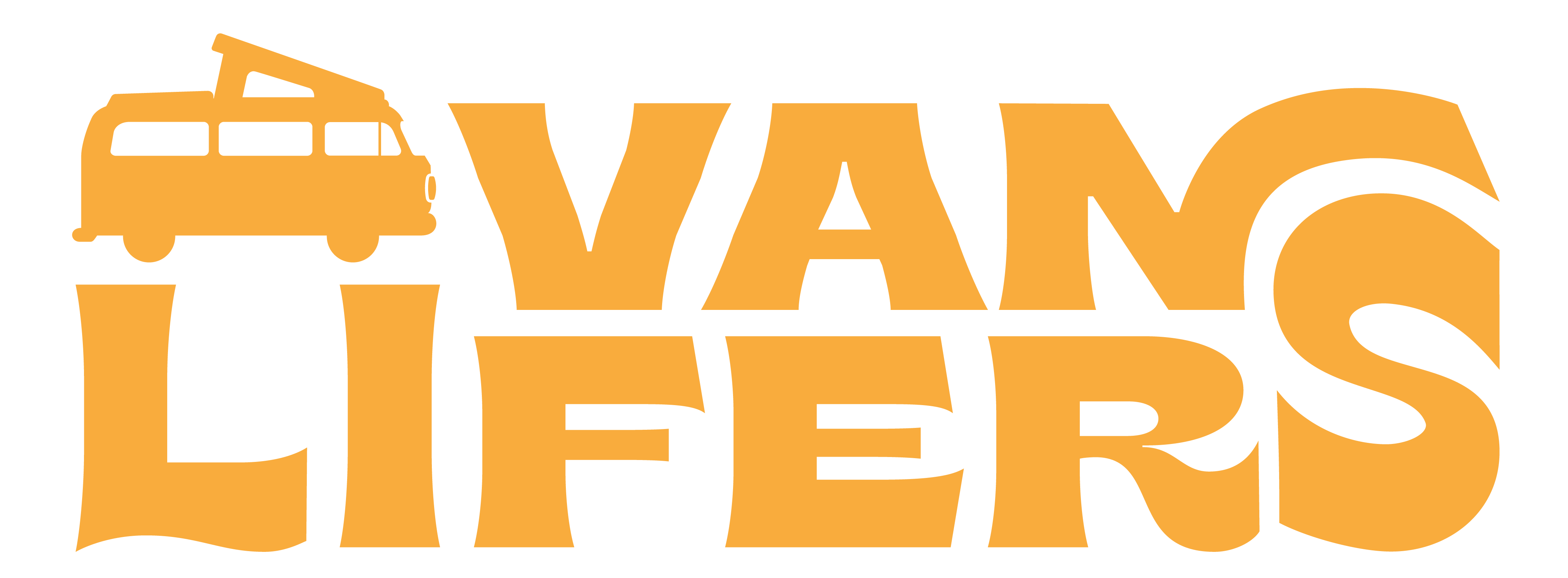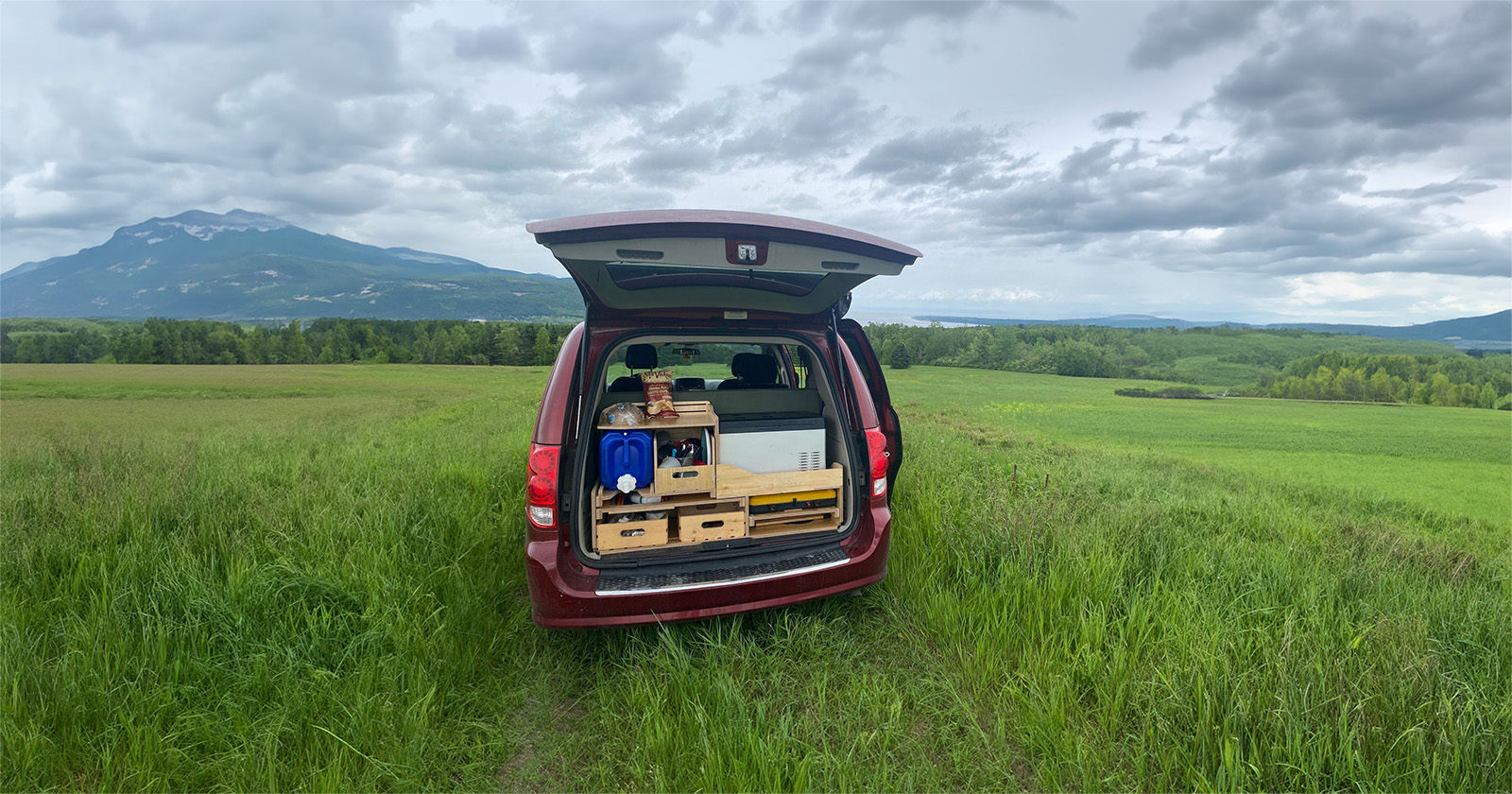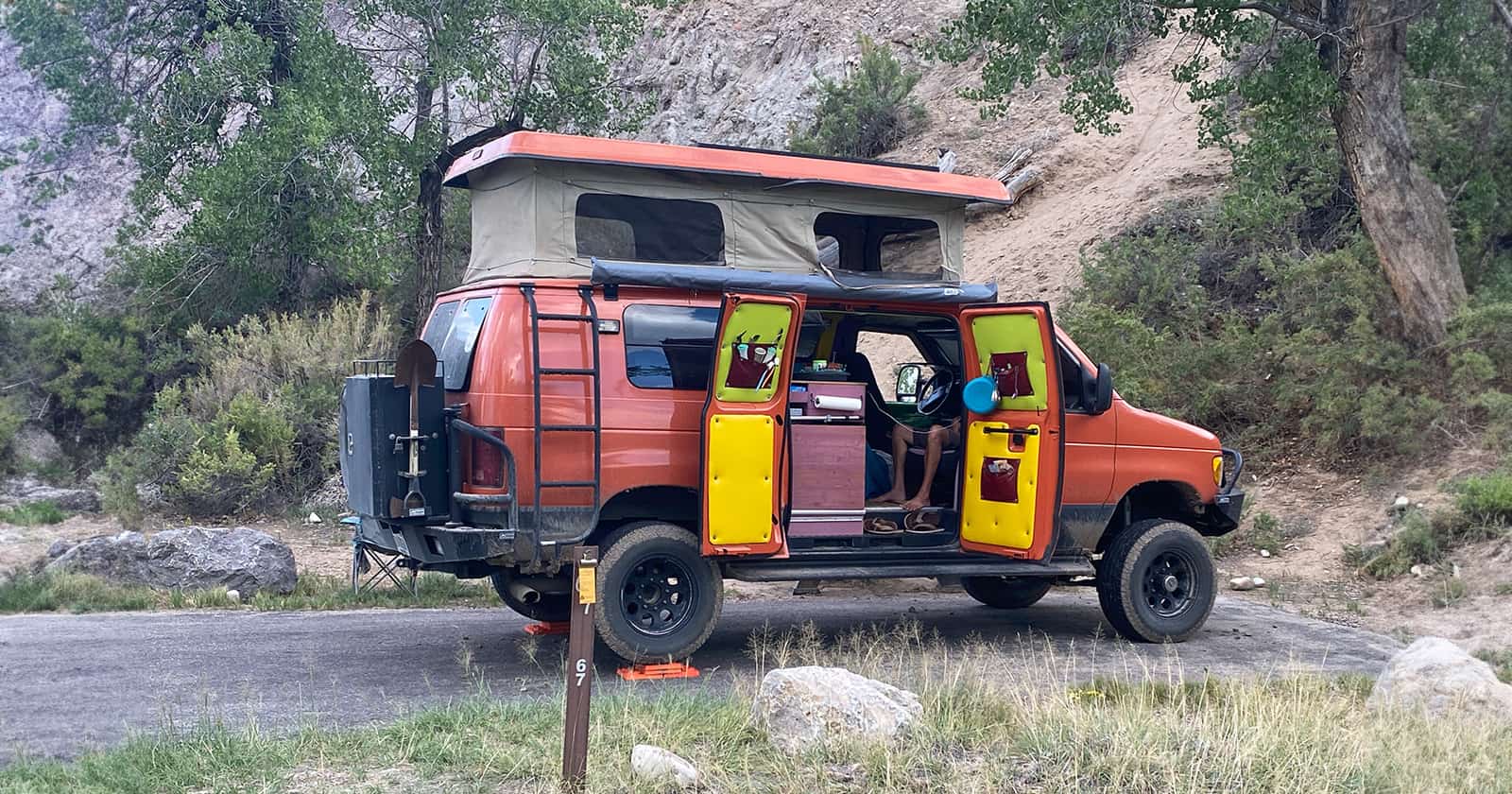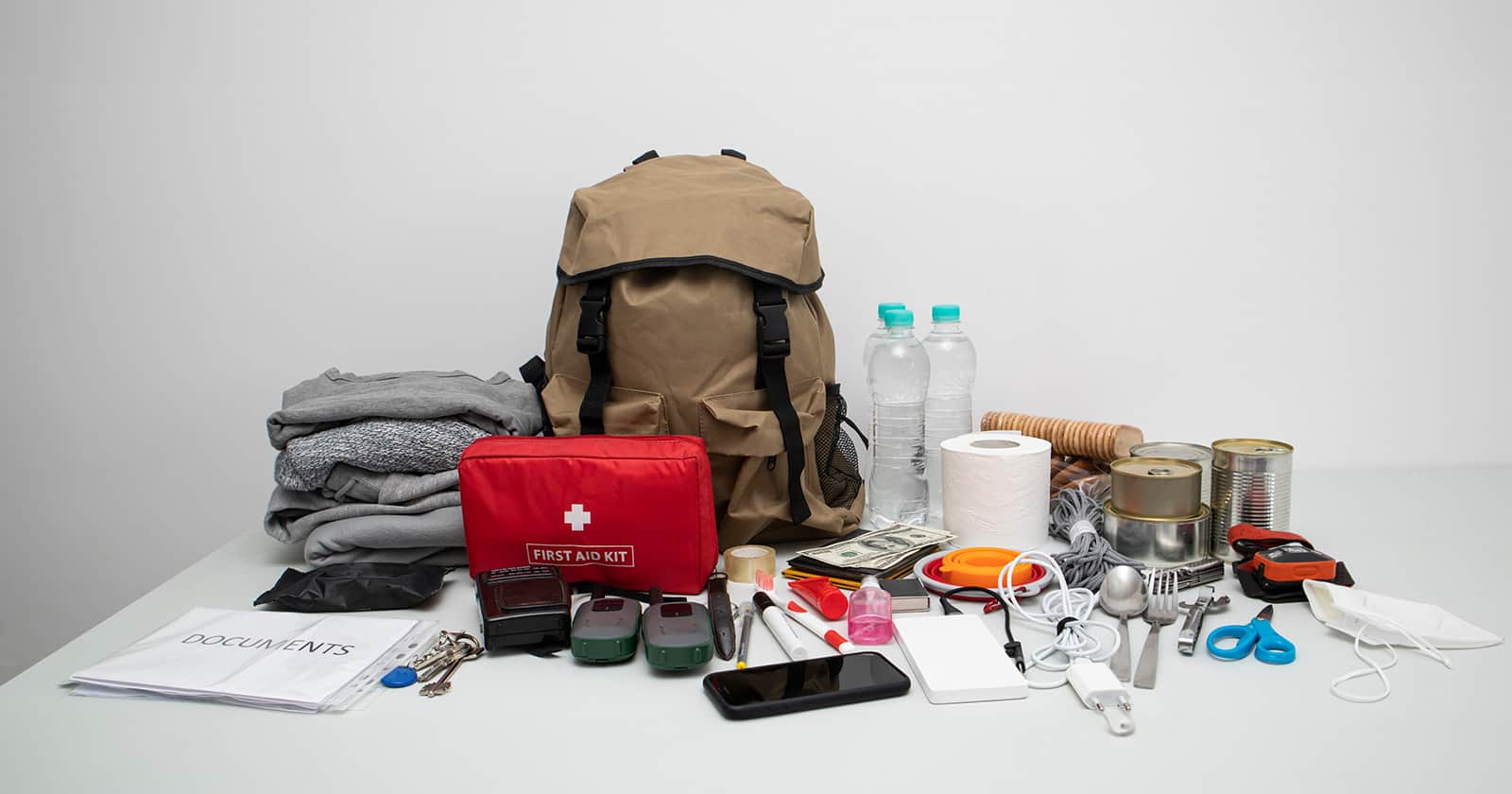Van life fitness may sound like a difficult proposition for some, but it’s actually an integral part of outdoor adventuring. Fitness is often associated with machinery and weight lifting. But, living on the move brings an entirely different dynamic to the table.
Life on the road doesn’t mean that exercise has to be redundant, difficult, or dull. In fact, it can be one of the most exciting parts of your day, especially if you get creative with everything the natural environment has to offer.
Road fitness is incredibly important. After all, you’ll spend a lot of time riding shotgun or in the driver’s seat, not to mention all the time spent in tight quarters. Getting out, stretching, hiking, and working your muscles is necessary for a healthy lifestyle and, more importantly, a healthy mindset.
Understanding the Basics of Fitness in Van Life
Why bother with a gym when the landscape is, quite literally, at your disposal? Van lifers don’t have to settle for gym memberships and the difficult minutiae of trying to find your particular gym wherever you end up.
Physical fitness aside, life in a campervan is a series of trade-offs, just like everything else in life. Mental health is one of the things that becomes more difficult to sustain as an RVer for a variety of reasons. These include, but aren’t limited to, the overall feeling of displacement, the constraints of living in a small space, lack of day-to-day consistency, the surprising expenses, and distance from friends and family.
Fortunately, we know a lot about the associations between physical fitness and mental well-being.
- Reduction or elimination of common health issues
- Runner’s high
- Reduced instances of depression
- Improved cognition
- Helps shield your mind against “incident psychosis”
- Reduces anxiety
- Improves pharmacological therapy
Honestly, we can list a lot more. It’s not something that necessarily needs a long list, however, as you can see for yourself how routine and consistent exercise makes you feel by getting out there and putting in the work.
Van life fitness routines aren’t just for mental and physical stimulation either. As a van lifer, this is your opportunity to get outside, see the world of nature in a whole new way, and efficiently integrate it with your own daily life.
Core Exercises for Van Lifers
The key to van life fitness is consistency. You’ll hear the terms, “high-impact” or “aerobics”, however, anaerobic exercises may be more your style. The good news is that you can do both, or either.
Neither of the two types is dependent on gear, though there are ways to institute workout components small enough for van life fitness opportunities on the fly. Here are a series of aerobic and anaerobic routines for beginners to the more experienced:
Beginner Van Life Fitness Routines
For beginners, it may feel weird doing in-place exercises with nothing surrounding you but a horizon full of mountains, forests, or open plains. Rest easy and get used to the fact that just about everything you do as a van lifer is done in the great outdoors.
- Lunges (no dumbbells): Stand upright, step forward with one leg and lower your hips until both knees are bent at about a 90-degree angle. Ensure your front knee is directly above your ankle and your back knee doesn’t touch the ground. Push back up to the starting position and alternate legs.
- Squats: Stand with your feet shoulder-width apart. Bend your knees and lower your body as if sitting back into a chair, keeping your back straight and knees over your toes. Lower down as far as comfortable, then return to standing.
- Crunches: Lie on your back with your knees bent and feet flat on the ground. Place your hands behind your head without interlocking your fingers. Lift your upper body towards your knees using your core muscles, then gently lower back down.
- Bicycles: Lie on your back with your knees in towards your chest and hands behind your head. Lift your shoulders and head slightly off the ground. Extend one leg out while bringing the opposite elbow towards the opposite knee, then switch sides, mimicking a pedaling motion.
- Push-ups: Start in a plank position with your hands under your shoulders. Lower your body towards the ground, keeping your elbows close to your body. Push back up to the starting plank position.
- Routine Morning Walks: Start your day with a brisk walk. Maintain a steady pace that increases your heart rate. Pay attention to your surroundings and breathe deeply, making the walk both physically and mentally refreshing.
- Hiking (start off with the easiest trail ratings only): Choose a trail suitable for beginners and gradually increase the difficulty. Wear appropriate footwear, carry water, and take breaks as needed. Enjoy the scenery and the physical challenge.
- Bulgarian Split Squat: Stand a couple of feet in front of a knee-high platform (like a bench). Extend one leg back and place the top of your foot on the platform. Lower your body by bending your front knee, keeping your torso upright. Push back up to the starting position, then switch legs.
- Pull-ups (any sturdy tree branch will do): Grip a tree branch with hands slightly wider than shoulder-width apart. Pull your body up until your chin is over the branch, then lower yourself back down with control. If you can’t do a full pull-up yet, try jumping up and slowly lowering yourself down.
- Reverse Snow Angels: Lie face down on the ground with arms at your sides, palms facing down. Simultaneously lift your arms, legs, and chest off the ground. Move your arms from your sides to overhead as if making a snow angel in reverse. Return to the starting position.
- Hip Hinges: Stand with feet hip-width apart. Slightly bend your knees. Push your hips back and lower your torso, keeping your back straight. You should feel a stretch in your hamstrings. Return to the starting position.
We could fill out pages and pages with detailed instructions on how to do these exercises. Suffice it to say, they are all rather simple and effective and are outstanding for those looking to start exercising on a routine basis.
As time goes on, running is proving to be worse for your body than walking or hiking. The reason is not a negative impact on the cardiovascular system but an increase in joint and impact injuries, especially in the long term. Take that into consideration if you want to run.
Van Life Fitness Routines For Non-Beginners
If travel workouts, or workouts in general, are not unfamiliar to you, more difficult exercises are in order. You can do a lot of the above exercises as well, only add some weight to your regimen. It’s understandable that living in a campervan limits the use of weights somewhat, but all it often takes is the addition of some dumbbells.
- Side Lateral Raises: Stand with feet shoulder-width apart, holding dumbbells at your sides. Raise your arms out to the sides until they’re at shoulder height, then lower them back down.
- Standing Military Press: Stand with feet shoulder-width apart. Hold dumbbells at shoulder level, palms facing forward. Press the weights upward until your arms are fully extended above your head, then lower them back to shoulder level.
- Planks: Lie face down, then lift your body off the ground, supporting yourself on your forearms and toes. Keep your body in a straight line from head to heels. Hold this position for a set duration.
- Hammer and Regular Curls: For hammer curls, hold dumbbells with palms facing each other and curl the weights to your shoulders. For regular curls, start with palms facing forward and curl the dumbbells to your shoulders. Lower and repeat.
- Bent-over Rows: Hold dumbbells and bend forward at the waist, back straight, letting the weights hang down. Pull the dumbbells towards your waist, keeping your elbows close to your body, then lower them back down.
- Standing Shoulder Fly: Hold dumbbells at your sides. With a slight bend in the elbows, lift the weights out to the sides until they reach shoulder height, then lower them back down.
- Devil Press: Begin with two dumbbells on the ground. Perform a burpee, then as you rise, clean the dumbbells to your shoulders and press them overhead. Return to the starting position and repeat.
- Kettlebell Swings: Stand with feet shoulder-width apart, holding a kettlebell with both hands. Bend your knees slightly, hinge at your hips to swing the kettlebell between your legs, then thrust your hips forward to swing the kettlebell up to chest height, and let momentum swing it back down.
- Lunges with Weights: Perform lunges while holding dumbbells at your sides. Step forward into a lunge, lower your body until both knees are bent at 90 degrees, then push back up to the starting position.
- Standing Dumbbell Calf Raises: Stand on the edge of a step or platform with dumbbells in hand. Raise your heels as high as possible by pushing up onto your toes, then lower back down.
- Arnold Press: Sit or stand with dumbbells in front of your shoulders, palms facing you. As you press the dumbbells overhead, rotate your hands so that your palms face forward at the top. Reverse the motion as you lower the dumbbells.
- Reverse Lunges: Hold dumbbells at your sides. Step backward into a lunge position, lower your hips until your front thigh is parallel to the floor, then push back to the starting position. Alternate legs.
- Weighted Crunches: Lie on your back with knees bent and feet flat on the floor. Hold a weight on your chest or above your head and curl your upper body towards your knees, then lower back down.
- Side Crunches: Lie on your side with legs stacked and a weight held at your ear with the upper arm. Contract your obliques to lift your upper body off the ground, then slowly lower back down. Repeat on the other side.
The idea here is to take what you already know and add weight or variations to the beginner exercises. For instance, side crunches work the obliques, and the exercise is only a slight variation of a regular crunch. As your overall fitness improves, adding more weight or repetitions to your routine is the best way to keep that improvement rolling.
Cardio Workouts On The Go
The above exercises are mostly for building core strength, but outside of hiking, jogging, or brisk walking, they don’t do much for the heart. True cardio workouts involve getting that heart rate up and sustaining it for 20 minutes or more.
Van life fitness is often as dependent on location as it is on your willpower. When it comes to cardio, plan ahead and locate campgrounds or places to boondock that are close to or offer hiking trails or wide open areas.
During the summer (and the spring or fall if you’re in some of the southernmost states), swimming is absolutely the best cardio option on the planet. It works every muscle, including the heart, and simply can’t be beat.
If you have mountain bikes or regular bikes in tow, plot your trips carefully, finding the best places to explore on two wheels and planning for the weather and the bike ride long before you ever get there. Kayaking, canoeing, SUP boarding, mountain biking, cycling, uphill hiking, jogging, and white water rafting are all fantastic aerobic options.
Diet, Tips, and Strategies For Van Life Fitness
If you’re approaching travel workouts from a weight loss perspective, you won’t get very far. You have to run about 3 miles to burn off the calories from a single slice of your favorite pie. To put that into perspective, a pound of fat is roughly 3,500 calories, compared to the average 300 calories from a slice of pie.
If that sounds disappointing, don’t let it be. Exercise has its place, and it helps the body immensely. However, diet is where the weight loss is at. Even if you don’t need to lose weight, diet plays an integral role in your daily van life fitness goals.
The problem with living life in a van and moving across the country is the tendency to fall back on food conveniences that aren’t very convenient to our bodies. The goal is to keep that metabolism working like a well-oiled machine and maintain organization and routine in your diet and workouts.
- Workout three to five days per week (depending on your goals and capabilities)
- Eat smaller and more often (six to seven small meals per day)
- Never skip breakfast, but keep it small
- Stay hydrated
- Maintain a solid protein intake daily
- Create meals that are portable for eating on the go
For muscle growth or just to maintain, you need a gram of protein per pound of body weight per day. If you’re trying to bulk (a difficult proposition without free weights), double the protein intake. Eating smaller meals, spread throughout the day, keeps your metabolism humming right along, with breakfast being the most important meal.
Strength Training Without A Gym
Increasing strength and bulking are hard without free weights and a gym. Simply put, the impact of free weights on muscle breakdown and repair is far more extensive than anything else. That doesn’t mean you can’t improve strength and size, however.
Mini resistance bands, covered resistance tubes, dumbbells, kettlebells, medicine balls, pilates balls, flat and foldable workout benches, jump ropes, and willpower are your new best friends. Along with a good set of headphones. If you need a workout bench, the Reebok Deck is an excellent option. It’s lightweight, has 20 different configurations, and stores easily.
With weights, three sets of eight to ten for each muscle group are usually the way to go. However, if you’re working with bands, three to four sets of 20 reps is the closest equivalent. Dumbells and kettlebells are your best impact weights, offering the most bulk and strength training. Use them consistently, but never work the same muscle group twice within a 48-hour period.
- Monday: Chest, shoulder, and arm workout – push-ups, dumbbell flyes, and dumbbell presses (if you have a bench), curls (hammer, regular, or both), and dips
- Tuesday: Back and abs – Crunches, side crunches, reverse snow angels, wide-grip pull-ups, back extensions, and inverted rows
- Wednesday: All legs – calf raises, lunges, squats, single leg deadlifts, jump squats, and leg raises
- Thursday: Repeat Monday (add some variety to your exercises)
- Friday: Repeat Tuesday
- Saturday: Repeat Wednesday
- Sunday: Break
Everybody’s situation is different, and you may have to adjust to a three or four-day workout. Whatever you decide to do, remain consistent. Muscle memory is definitely a thing, and your body performs better if you consistently exercise.
Staying Motivated And Consistent
The hardest part of working out is not the working out part. Willpower, motivation, and consistency are the toughest obstacles to overcome in van life fitness? This is especially true after a full day on the road. Driving is surprisingly exhausting work.
There are a thousand different approaches to staying motivated, mostly because what motivates one person may not motivate another. We all have our individual habits and tendencies, after all. Online classes, fitness clubs, social media, and general socializing are all ways to fuel motivation. Join like-minded online groups and engage with others about their routines and what works for them.
Make sure you set goals and keep those goals. The first few weeks are the hardest, but once you begin seeing the results of your efforts, it will feed your desire to keep pushing. Working out needs to become as integral to your day as brushing your teeth, eating, or going to bed. Track your efforts and get creative with your routines. Whenever you reach your milestones, reward yourself for the effort.
Incorporate your environment as well. This is one of the biggest advantages for van lifers. Working out in a gym or at home is the same old, same old, each and every day. There’s never a change in scenery. The equipment is the same as well.
See that rock over there? That’s perfect for three sets of tricep dips. That tree branch will make an excellent pull-up bar for your lat or bicep workout. Take the scenery in as well. Breathe in the natural beauty around you and use all of your senses to bolster your mood, enthusiasm, and motivation. It’s surprisingly effective.
Final Thoughts On Van Life Fitness
This is a massive topic, and we could honestly go on and on forever. Living life on the road opens us up to constant changes, which are advantageous in terms of outdoor exercises and van life fitness in general. Consistency, motivation, and willpower are key.
Combined, they are the fuel for your workout regimen, diet, and sustained efforts throughout the year. Feel free to get creative. Everyone is different, and finding what works for you is an important driving force behind your motivation. Make it fun, and feel free to share your goals and motivations with others as well. Receiving and giving positive feedback is a huge motivator and inspiration.
With so many tools, workout variations, diets, and motivational methods out there, we’d love to hear what your routine is! Let us know your own methods, motivations, tips, and tricks in the comments below!




